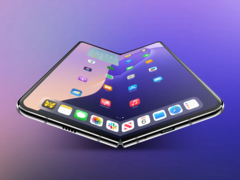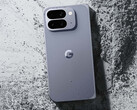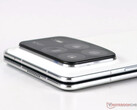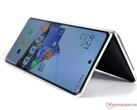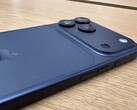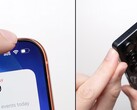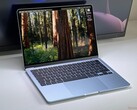Apple’s first foldable iPhone has been the subject of speculation for a couple of months now, and the latest reports finally offer a clearer picture of what it might look like. Bloomberg’s Mark Gurman says the company is working on a device that resembles two iPhone Airs joined together. That description may sound simplistic, but it points to a design direction that emphasizes thinness, flat edges, and a familiar titanium frame.
Apple has leaned heavily on titanium in its recent iPhone Air, and durability tests from iFixit and JerryRigEverything have already shown that the material holds up well under stress. Bringing that same strength to a foldable design would help address long-standing concerns about fragility in this category. The numbers being floated suggest Apple is aiming for a device that is impressively slim by foldable standards. When closed, the phone could measure around 9 to 9.5mm thick, while unfolding it may leave you holding a profile as thin as 4.5mm. For comparison, Samsung’s Galaxy Z Fold7 comes in at 8.9mm and Google’s Pixel Fold at 10.8mm, so Apple seems to be targeting a spot right in between.
The inner screen is rumored to measure about 7.8 inches with a nearly square aspect ratio, while the outer screen could land at around 5.5 inches. Apple is also said to be working on ways to minimize the crease in the middle of the display, possibly using a metal support plate in the hinge to distribute stress more evenly. Reports point to a combination of titanium and stainless steel for the hinge, with liquid metal elements potentially being part of the design.
If true, it would give the device a level of structural integrity that could set it apart from competitors. There is even speculation that Apple may try to carry over some of the iPhone Air’s repairability, which received a seven out of ten from iFixit. That would be unusual for a foldable, given that the Pixel Fold and Galaxy Z Fold7 only scored threes, and even coming close to that benchmark would be impressive.
On the features side, Apple seems to be leaning toward a practical but still premium setup. You can expect four cameras, with two on the back, one on the outer screen, and another inside. Face ID may be left out to simplify the design, replaced by a side button with Touch ID. While that would be a shift from Apple’s recent strategy, it would help reduce the space needed inside the frame. The price, however, is shaping up to be steep.
Current estimates put it at no less than 2,000 US dollars and possibly as high as $2,300. That would place it comfortably above the already expensive foldables from Samsung and Google, raising the stakes for Apple to justify the added cost. Production plans also seem to be falling into place as reports from supply chain sources suggest pilot runs will begin in Taiwan before scaling up in India and other regions. The expected release window is late 2026, with September mentioned most often but with the possibility of a slight delay into the final quarter of the year.




